
RAF Biggin Hill is well known as an iconic airfield of WW2 and the Battle of Britain. It was an operational RAF airfield between 1930 and 1992 and a sector station in No 11 Group, Fighter Command.
Whilst the airfield is now in civilian aviation usage, adjacent to the airfield is the St Georges’ Chapel of Remembrance. Amongst the airmen commemorated here who were killed while stationed at, or serving in, the Biggin Hill sector are four Czechoslovak airmen – F/Lt Svatopluk Bachurek, Vilem Goth of 501 Sqn, Sgt. Zdenek Kothera, and F/Lt Jaroslav Kulhanek who served in 124 Sqn.

History
The original Chapel was constructed from three pre-fabricated RAF huts forming a single rectangular building in June 1943, to commemorate the RAF pilots stationed at Biggin Hill who had fallen during the Battle of Britain and also to mark the 1000th ‘kill’ of Luftwaffe aircraft in the Biggin Hill sector. The first service was held there on 19 September that year – Battle of Britain Sunday. A regular visitor to Biggin Hill and the Chapel was Winston Churchill whose home at Chartwell was only about 7 miles away.
Tragically, in 1946 the Chapel was almost totally destroyed by fire which was possibly due to an electrical fault. When Churchill heard this news he immediately contacted the then Chaplin Rev C. King. Between them, they instigated a national fund raising campaign, which through subscriptions and donations from individuals and the Air Ministry managed to raise sufficient funds to enable the existing chapel to be built.

The foundation stone was laid in July 1951 by Air chief Marshall Lord Dowding who had been Commander in Chief of Fighter Command during the Battle of Britain. The building was completed later that year and dedicated by the Bishop of Rochester in November 1951.
Chapel Altar

On either side of the Chapel altar are inscribed oak panels on which are inscribed the names of the 453 airmen killed whilst stationed at Biggin Hill during WW2. The badges of the 52 RAF Squadrons who were deployed at the station during that period are also displayed. The two station Commanders for that period are also inscribed on these panels.


On either side of these panels are the flags of Australia, Belgium, Canada, Czechoslovakia, France, Holland, New Zealand, Norway, Poland, South Africa and the USA; the Commonwealth and wartime allies whose squadrons were stationed at Biggin Hill during that period.

The Czechoslovak flag is located on the right hand flag collection, 3rd from the left.

The wooden floor in the altar area is made from slats from sectioned propellor blades.


Within the Chapel area are are three items which also display a Czechoslovak connection.
The Book of Remembrance, can be found in the display cabinet in the left hand area before the altar area. The names of the 454 Allied pilots who were killed while stationed at Biggin Hill, or within the Biggin Hill sector are listed, in date order.





In the Chapel are 84 hand made kneelers, the uniform design of all incorporates a Spitfire, the shield of St George, a sword and a circle of chains (which reflects Biggin Hill’s station motto of ‘The Strongest Link’). However the ends of the kneelers are individually marked with the names of the various nations whose airmen were stationed at Biggin Hill during WW2:

The Chapel Windows
The twelve stained glass windows were designed by Hugh Easton’s studio, who also designed the stained glass Battle of Britain windows in Westminster Abbey, and installed in 1955, in the main Chapel area. They have a common theme; each represents the spirit of a pilot, holding either a representation of one of the badges of the seven squadrons who participated in the Battle of Britain while stationed at Biggin Hill, or of Fighter Command or of one of its Groups.
St George’s Room
At the rear of the Chapel is St Georges Room which commemorates the RAF men and women who were members of the various ground services needed on any operational RAF airfield. The room also holds numerous artefacts, photographs and paintings remembering the period when Biggin Hill was an operational RAF airfield.
The Gardens
In the mid 1950’s a Spitfire and Hurricane, both of which had flown from Biggin Hill, were positioned on either side of the main gates Gate Gardens. However the need for spares, to keep the Battle of Britain Memorial Flight operational, meant that each was cannibalised for parts. Eventually this and general deterioration due to weather conditions meant that both aircraft gradually deteriorated into a poor state. Eventually the Ministry of Defence replaced them with fibre-glass replica’s; the Spitfire, N3194 GR-Z, in the livery of 92 Sqn and the Hurricane, L1719 AL-D in 79 Sqn livery, both of whom had flown from Biggin Hill.
Adjacent to the Chapel is the Garden of Remembrance where, by custom, the ashes of many deceased RAF personnel and their spouses have been scattered.
_______________________________________________________________
The commemorated Czechoslovak pilots
_______________________________________________________________

Svatopluk Bachurek
BACHŮREK Svatopluk, F/Lt, 27,
124 Sqn., Pilot
* 07/03/15, Kroměříž
† 25/04/42, de Koog, Holland
Escaped to Poland, in France was a pilot in l’Armee d’Air, on the capitulation of France was evacuated to the UK where he joined the RAF. Originally with 312 Sqn and later posted to 124 Sqn.

His Spitfire, W3332, shot down over the English Channel during Circus 137. His body washed ashore on Dutch coast on 19 June 1942.
He in interred at the CWGC section at Texel [Den Burg] General Cemetery.
Grave ref: Plot K. Row 6. Grave 122.
A symbolic urn, No 44, is
also interred at the Airman’s Memorial,
Prostějov, Czech Republic
_______________________________________________________________

Vilelm Goth
GÖTH Vilém, P/O, 25,
501 Sqn., Pilot
* 24/04/15, Brno
† 25/10/40, Staplehurst, UK
Pre WW2 pilot in the Czechoslovak Air Force. After the German occupation attempted to escape to Poland but it had to be aborted as the escape line had been betrayed to the Gesatpo. His second attempt on the nigh of 12/13 June was successful and reached Poland, with collegaues, hidden aboard a coal train. Initially at the Czechoslovak transit camp at Maly Bronowice, near Krakow. Left Poland from Gynia with 188 other Cz airmen and 190 Cz soldiers on 26 July aboard the Kastelholm, arriving in Calais, France on 31 July.
Was required to join the French Foreign Legion, but before all the formalities were completed WW2 was decared and was released for service in l’Armee d’Air. Was posted to Châtres for re-training on French MS-230 fighter aircraft. He was still completing his training when the Germans invaded France and he was redeployed to Cazaux airbase in South West France. When France capitulated, was released from l’Armee d’Air service and evacuated, with other Czechoslovak airmen from Bordeaux, aboard the Karanan on 19 June.
They arrived in Falmouth on 21 June and after security formalities had been done was accepted into the RAF, at the rank of P/O, and assigned to 310 Sqn based at Duxford for retraining on Hurricane Mk I fighter aircraft. He made his first operational flight on 19 August. During the Battle of Britain he made a further 24 operational flights with 310 Sqn. He achieved combat success on 7 September when he shot down a Me 110 over the Thames Estuary.

On 18 October he was posted to 501 Sqn based at Kenley. On 25 October, whilst flying Hurricane, P2903, he was killed whilst in combat with Me109 from JG 51 over Tenterden, at 15:15 his Hurricane Mk I P3903 ND-?) collided with his wing leader P/O K W McKenzie, in Hurricane Mk I V6806. McKenzie managed to bail-out, but Göth’s Hurricane crashed in Bridgehurst Wood, Marden.
He in interred at the CWGC section Sittingbourne cemetery, Kent..
Grave ref: Old ground. Sec. W. Grave 141.
A symbolic urn, was returned, in 1945, to Brno, Czechoslovakia.
_______________________________________________________________

Zdeněk Kothera
KOTHERA Zdeněk, Sgt, 23,
124 Sqn., Pilot
* 16/03/19, Tetín, Beroun.
† 27/04/42, English Channel, off French coast.
A pre-WW2 pilot with the Czechoslovak Air Force. Following the German occupation on 15 March 1939, escaped to Poland, and then sailed to France where he was required to join the French Foreign Legion but before the formalities were completed, war was declared. He was transferred to the l’Armee d’Air and sent to Chartres airbase, on 24 September, for retraining on Curtis H-75A fighter aircraft. Was posted to GC I/8 on 18 May 1940. Following the German invasion of France was redeployed to CIC Chartres on 23 May and on 1 June to GC I/5 where he served in the units 2nd squadron at the rank of Corporal-Chef. On 15 June 1940 achieved combat success when he had a ‘shared’ kill of a Luftwaffe Hs126 reconnassaince plane. After the capitulation of France, was evacuated to Oran, Algeria where, due to illness, he was hospitalised preventing him from travelling with other evacuated Czechoslovak airmen to Casablanca, Morocco for evacuation to England. He was only able to travel the following year and arrived in England on 27 June 1941. On arrival he joined the RAF VR and was retrained on British aircraft and also learning English, he was then posted to 124 Sqn.

Flying Spitfire, W3758, during Circus 141, escorting Boston light bombers on a raid to Lille, was involved in combat on the return journey about 5 miles north of Lille. Was shot down over the coast of NW France and his Spitfire crashed into the English Channel between Dunkirk and Mardyk. His body was washed ashore near Texel, Holland 16 June 1942.
He in interred at the CWGC section at Texel [Den Burg] General Cemetery.
Grave ref: Plot K. Row 5. Grave 115.
A symbolic urn, No 45, is
also interred at the Airman’s Memorial,
Prostějov, Czech Republic
_______________________________________________________________

Jaroslav Kulhanek
KULHÁNEK Jaroslav, F/Lt, 34,
124 Sqn., Pilot
* 03/11/07, Prague
† 13/03/42, de Koog, Holland
A pre-WW2 pilot with the Czechoslovak Air Force. Following the German occupation on 15 March 1939, escaped to Poland in early May. With other Czechoslovak airmen sailed from Gydnia, on 12 May, aboard the ‘Kastelholm’ to Tilbury, then aboard the ‘Warsawa’ to Bolougne, France arriving on 26 May. In France he was required to join the French Foreign Legion and sent initially to the Legions base at Marseille and then to their training camp at Siddi-bel-Abbes, Algeria. When war was declared, he was transferred to the l’Armee d’Air and sent to Chartres airbase for retraining on MS-406 fighter aircraft. Was posted to GC I/6, at the rank of Lieutenant, on 8 March 1940.
On 24 May 1940 achieved combat success when he had a ‘shared’ kill of a Do 215 near Montdidier. After the capitulation of France, was evacuated, on 24 June, aboard the ‘Gouverneur Général Chanzy’ from Port Vendres to Oran, Algeria where the Czechoslovak airmen were released from l’Armee d’Air service. From here the Czechoslovak airmen went on a 4 day train journey to Casablanca, Morocco where, on 9 July, they boarded the ‘Royal Scotsman’ which took them to Gibraltar. Here they boarded the ‘David Livingston’ which took them to England, arriving at Cardiff on 5 August.
On arrival in England he joined the RAF VR and was sent to 57 OTU for retraining on British equipment. retrained on British aircraft and also learning English. His first posting was to the Czechoslovak Inspectorate in London, but he sought to return to operational flying and in November he was posted to 124 Sqn.

On 13 March 1942, while on Circus 114, escorting Boston bombers on a raid on Hazebrouck he was killed when his Spitfire Vb, ON-L BL758, was shot down near Offrethun, 10km south-east of Boulogne, France.
He in interred at the CWGC section at Calais Canadian War Cemetery, Leubringhen, Calais..
Grave ref: 3. E. 3.
_______________________________________________________________
St George’s Chapel, Biggin Hill is located:
| Address: | St Georges RAF Chapel, Main Rd, Biggin Hill, Westerham, TN16 3EJ |
| GPS Location: | 51°19’37” N 0°1’22” E |
| Map Location: | View |
_______________________________________________________________
Update
When the original article was written, it was very disappointing to see that there was no Czechoslovak presence in the Chapel, while the nations of all other Allied pilots who had served at Biggin Hill during WW2 had donated an artifact from their homeland to the Chapel.
We are very pleased that our article led to the correction of the lack of a Czechoslovak presence at St Georges Chapel.
On 21 July 2016, Cardinal Dominik Duka, Archbishop of Prague (himself the son of a Czechoslovak RAF airman) blessed a replica of the Infant Jesus of Prague statue that had been brought over from the Czech Republic and donated to the Chapel.

Additionally a banner showing the Czechoslovak squadron badges of 68 Sqn, 310 Sqn, 311 Sqn, 312 Sqn and 313 Sqn was also donated.

_______________________________________________________________
The assistance of Laurie Chester with this article is much appreciated.
Article last updated 6 August 2016.

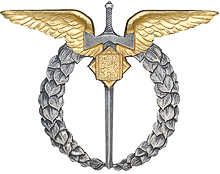




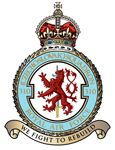
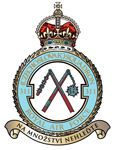
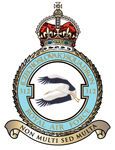
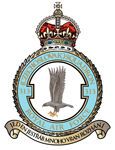


Thank you for a most interesting article – and excellent photos 🙂
Very nice article.